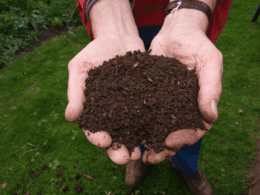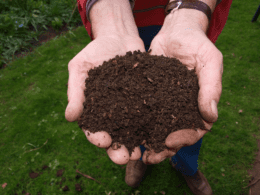If you’re planning to plant a garden or farm, you’ll need to prepare your soil first. That’s where tools like the disc harrow and tiller come in handy. While both tools serve a similar purpose, they have distinct differences that can make one more suitable for your soil. So, which one is best for you? Let’s take a closer look.
When it comes to choosing the right tool for your soil, safety is key. You want to make sure that you’re not only achieving the best results for your plants but also keeping yourself safe from injury. That’s why it’s important to understand the pros and cons of each tool before making a decision.
In this article, we’ll explore the differences between the disc harrow and tiller so that you can make an informed choice and ensure a successful growing season.
Quick Takeaways
- Disc harrows are used for soil preparation in gardening and farming, while tillers are made to break up tough, compacted soil and ideal for breaking apart large clumps of soil for seeding or setting new plants.
- Disc harrows come in three types: single-action, double-action, and offset, while tillers come in three types: conventional, conservation, and no-till.
- Disc harrows are beneficial for home gardeners, but hard to maneuver in small spaces and only penetrate a few inches into soil, while power tillers are helpful for large-acre planting areas and feature two wheels with front-tine or rear-tine design.
- Choosing between disc harrow and tiller depends on specific needs and preferences of gardener or farmer for proper soil cultivation before planting season.
Which Is Better for Preparing Soil: a Disc Harrow or a Cultivator?
When it comes to preparing soil, the choice between a disc harrow and a cultivator or tiller: garden comparison, depends on various factors. A disc harrow is effective for deeply tilling larger areas and breaking up heavy soil. On the other hand, cultivators are ideal for smaller plots, providing more precision and versatility for tasks like mixing compost or loosening soil. Ultimately, the decision should consider the size of the area, soil condition, and specific needs of your garden.
Disc Harrows Overview
If you’re looking to prepare your soil for gardening or farming, disc harrows are a great tool to have. Single-action disc harrows can create furrows and ridges in the soil, making it easier to plant seeds. They also break up clumps of dirt and even out the field surface, which is necessary for proper drainage.
Another benefit of using single-action disc harrows is that they can incorporate surface application fertilizers and herbicides, which helps to promote healthy plant growth. To ensure your disc harrows work properly, it’s important to maintain them regularly.
After each use, clean off any dirt or debris that may have accumulated on the discs. Check for any damage or wear and tear, and repair or replace any parts as needed. Also, make sure the discs are properly adjusted to the desired depth before starting to use them.
By following these best practices, you can be sure that your disc harrows will last for many years to come.
Tillers Overview
When preparing your soil for planting, you may want to consider using a tiller. This tool is specifically designed to break up tough, compacted soil and make it easier for planting.
Tillers come in three types: conventional, conservation, and no-till. Conventional tillers are best for turning over soil after harvest, but they can erode topsoil and reduce mineral and nutrition levels.
Conservation tillers limit soil disruption to a minimum, slow down erosion, and increase organic material and nutrients. No-till tillers involve no turning over of old crop residues and digging too deep to set seeds, which increases natural carbon levels and reduces erosion.
By choosing the right tiller for your soil preparation needs, you can ensure a healthy environment for your plants to grow.
Choosing the Right Tool
To choose the right tool for preparing your garden or farm for planting, consider your specific needs and preferences. Both disc harrows and tillers have their pros and cons, so it’s important to know which one will work best for your soil type and the size of your planting area. Here’s a comparison table to help you make the right decision:
| Disc Harrow | Tiller |
|---|---|
| Breaks up clumps of dirt and topsoil crust | Ideal for breaking apart large clumps of soil for seeding or setting new plants |
| Even out field surface | Three types: conventional, conservation, and no-till |
| Incorporate surface application fertilizers and herbicides | Conserves soil and increases organic material and nutrients |
| Three types: single-action, double-action, and offset | Fits into small areas |
| Beneficial for home gardeners | Digs deeper into soil |
Depending on your needs, either tool could be the right choice. If you have tough, compacted soil and need to break it apart to set new plants, a tiller may be your best bet. However, if you’re looking to even out your field surface and incorporate surface application fertilizers and herbicides, a disc harrow may be a better option. Consider your soil type and the size of your planting area when deciding which tool to use for soil preparation.
Frequently Asked Questions
How much maintenance do disc harrows and tillers require?
Maintaining disc harrows and tillers is crucial for their longevity. Benefits and drawbacks of each depend on the type and frequency of maintenance required. Overall, tillers tend to have higher maintenance costs due to their complexity.
Can disc harrows and tillers be used for different types of soil?
To answer your question, disc harrows and tillers have different types of soil compatibility. Disc harrows work best with loose soil, while tillers can handle tougher, compacted soil. Advantages and disadvantages vary depending on the specific tool and soil type.
Are there any safety precautions that need to be taken while using disc harrows and tillers?
When handling equipment like disc harrows and tillers, it’s important to follow safety tips. Wear protective gear, keep hands and feet away from moving parts, and turn off the engine before making adjustments.
How much noise do disc harrows and tillers make during operation?
Disc harrows and tillers produce noise levels of around 80-100 decibels, which can cause hearing damage and disturb the environment. Consider using noise-reducing gear and operating at appropriate hours to minimize the impact.
Can disc harrows and tillers be used for both small and large-scale gardening/farming projects?
When deciding between a disc harrow and tiller, consider the scale of your project. Both tools can be used for small and large-scale gardening/farming, but make sure to choose one that is compatible with your soil.









